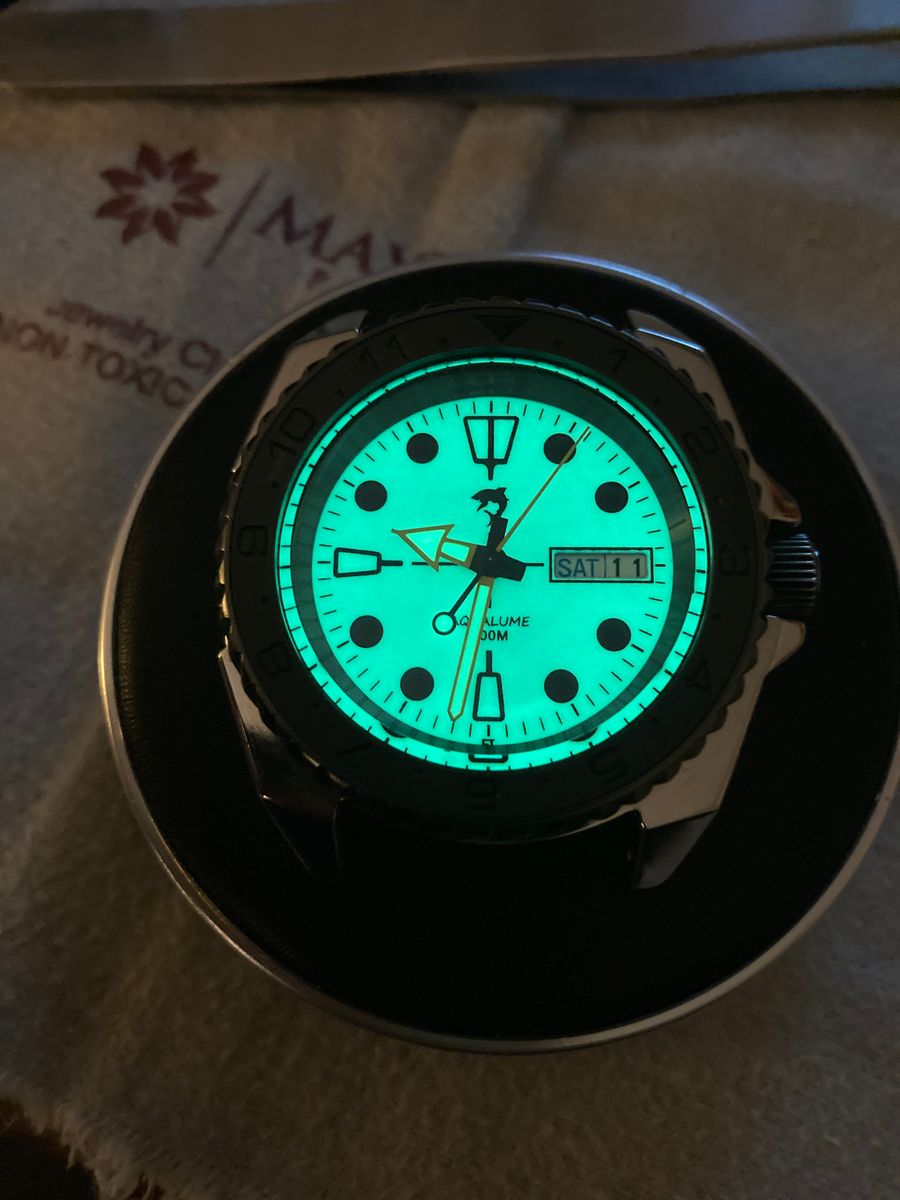Free & Fast USA Shipping Learn More
Discovering Why Luminous Watch Dials and Hands Glow

If you’ve owned a luminous watch, you might have wondered what makes its dials and hands glow. How did the watchmakers do it? A lot of people love using luminous watches, particularly divers.
Aside from the revolving bezel, a diving watch’s dial with luminous hands and indexes also make the timepiece stand out. These components make it easier for divers to navigate underwater. They have improved sight in dark surroundings because of the luminous property, which protects them from any potential threats when immersed in the water.
While luminous displays are common in dive watches, they can also be seen in casual timepieces. It’s one of the reasons why watch collectors have been discussing luminous dials for so long.
The interesting thing is that a luminous watch contains fascinating information that most watch wearers are unaware of. In the following paragraphs, you will learn more about the main materials responsible for the glow emitting from luminous watches.
Phosphorescence
Before proceeding, it would benefit you to know the definition of terms in this section:
- Phosphorescence: any material that glows in the dark
- Photoluminescence: the capacity of some elements to emit light after being exposed to light
- Photons: quantum particles in an electromagnetic field that are energy packets making up light
When an electron atom in a material absorbs a photon, it is stimulated, reaching a higher energy state before returning to its original state. By this time, the substance has begun to produce photons, which you see as visible light.
Phosphorescence is a material that absorbs photons from a light source. They slowly emit photons as light, which is why phosphorescent paints are commonly used for watch dials.
Fluorescence
Fluorescent materials aren’t usually practical for watch dials. Fluorescence is the fast emission of absorbed energy by fluorescent materials. If there is a light source, they will glow indefinitely, although particle emission occurs in nanoseconds. This means most of these materials will become dark as soon as the light source is lost.
Radium Paint
Radium paint is self-luminous when it’s freshly applied. It does not need an external energy source because there’s already light coming from the radium particles’ radiation in the paint. While this illuminates watch dials, it has two drawbacks: It is chemically unstable, and it poses a radiological risk.
Some watches used radium paint for numerals and indexes in the past. However, due to its harmful health consequences, it is no longer widely used in the modern watchmaking industry.
Promethium
Promethium was later discovered as a substitute because radium paint has harmful effects. This substance is less radioactive than radium in terms of physics. Promethium emits only low-energy beta particles and is used as an excitant, allowing the dial to emit visible light.
Tritium
Like promethium, tritium was also used as a substitute for radium paint. It is also a low-energy beta emitter but with a longer half-life. Promethium has a half-life of 2.62 years, while tritium has 12.32 years—making tritium the better choice of the two.
Conclusion
It is vital to know the history of luminous dials, the materials they’re made of, and their physics. Basic knowledge of chemistry and physics can help watch enthusiasts understand how watches work and properly manage such dangerous material in order for them to enjoy this luminous feature.
If you’re looking for custom Seiko dials, you will find that and more at Crystaltimes USA. We are the crystal specialist for cases, case backs, bezels, bezel inserts, crowns, chapter rings, dials, movements, and other associated metal parts. Check out our selections today!
